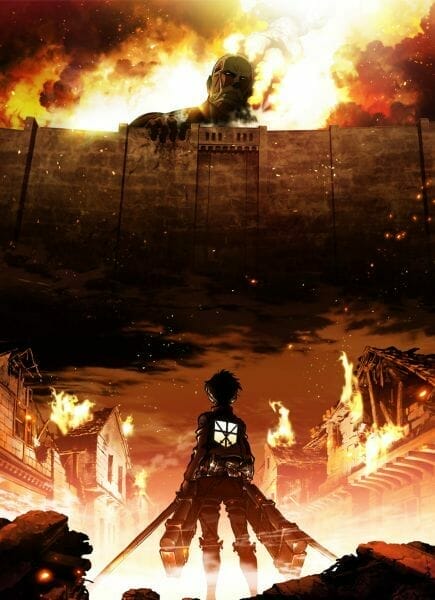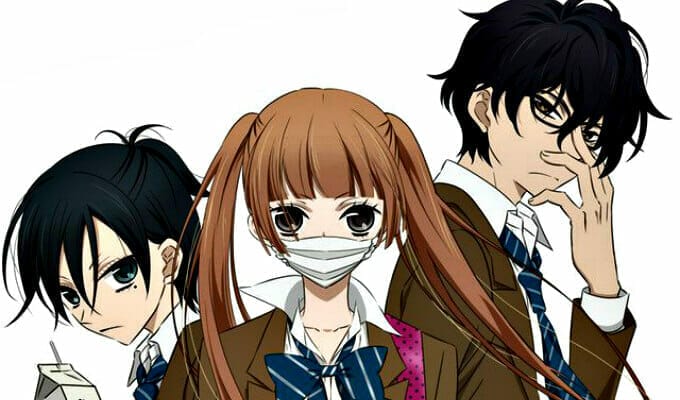 On Sunday, Anime News Network reported that Attack on Titan passed 25 million copies in circulation in Japan. To celebrate, parent publication Bessatsu Shonen Magazine will offer a pair of QUO cards to its readers. Tracking company Oricon estimates that the Attack on Titan manga sold 20.38 million copies in Japan as of September 8, 2013. All eleven volumes regularly appear in the company’s top 50 weekly sellers.
On Sunday, Anime News Network reported that Attack on Titan passed 25 million copies in circulation in Japan. To celebrate, parent publication Bessatsu Shonen Magazine will offer a pair of QUO cards to its readers. Tracking company Oricon estimates that the Attack on Titan manga sold 20.38 million copies in Japan as of September 8, 2013. All eleven volumes regularly appear in the company’s top 50 weekly sellers.
In America, Nielsen announced that Attack on Titan took five of the top 20 graphic novel sales as of October 4. While it didn’t take the top spot (which went to Sailor Moon Short Stories), it did have more entries into the chart than any other title in the list, beating out even Walking Dead.
Attack on Titan‘s incredible sales can be seen as a testament to the brand as a whole. It’s a title that’s enraptured anime fans of all stripes, and caught the attention of those who don’t normally watch anime or read manga. People are talking, sharing, and exposing their friends to the property. There are calls to get the anime adaptation onto Toonami; Neon Alley is expressing interest; and the show is the darling of streaming networks like Crunchyroll and FUNimation.com.
More important, though, it’s a show that’s expanding the anime market after several years of contraction. Over the past several years, we’ve seen the market steadily shrink, as otaku pander shows, video game adaptations, and moe flooded the market. Predictable titles that focused on popular fetishes and safe tropes drowned out the few titles that would dare to break from the norm.While they were profitable products that resonated with the core, these are titles that are utterly toxic to the outside market.
We began to see first and second-degree non-customers flee anime in droves, as the increasingly concentrated core grew insular and vocal. Companies continued to give this group what they demanded, since they continued to pay out for everything from Blu-Rays to figures. Since they were getting what they wanted, there was little need for the core to change, or even entertain the notion of changing. At its worst, the market’s situation grew so dire that even anime fans were complaining about the content, and low-grade crap like Family Guy, of all programs, were taking snipes at anime as a whole.
Anime hit rock bottom. It lost its cool, and was beginning to suffer as the core grew bored. In the months since then, we’ve seen efforts made to reverse common trends, as shows like Lupin III: The Woman Named Fujiko Mine and Accel World started pushing back. Attack on Titan is, without a doubt, the latest tick in this movement. The series, which really began to take off in 2011, when it won the Kodansha Manga Award for shounen properties, managed to latch onto devoted audiences in both the east and the west.
Anime fans, by and large, are excited. This is a show that’s reached far beyond the scope of the industry, pulling in comic fans, action addicts, and even fantasy aficionados. It’s a show that’s managed to cut through the fanboy demands to deliver an experience that’s visceral, grandiose, and just plain awesome. While the plot can be a bit hokey at points, Attack on Titan is a series that delivers a slick, exciting experience that really hammers home the “cool” factor. Just telling an average person that it’s a series about “giant people who eat other people” is enough to get people interested. The stylish animation, swashbuckling atmosphere, and strong writing prove to be the keys to keeping those outer markets engrossed.
While I see Attack on Titan having a limited shelf life., it’s proven to be a series that can resonate with those outside the anime bubble. Hopefully, as the results filter back into the system, we’ll see those that hold the purse strings becoming a bit more willing to experiment with their investments. While there will always be some comfort in the safe investment, there’s always the chance for a killer return on a true gamble.












